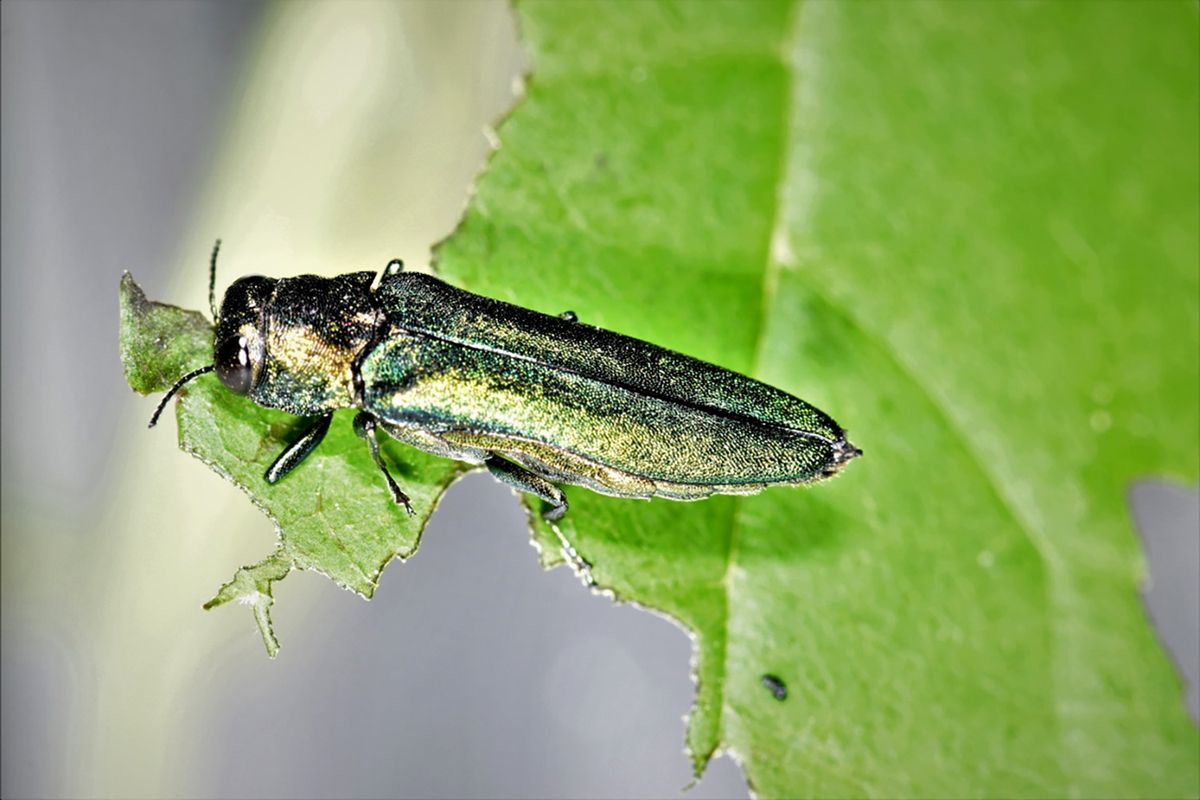Tiny wasps could help save trees under attack

Up close, the emerald ash borer is a strikingly beautiful insect. It’s also a dangerous pest. The metallic green beetles entered the U.S. from northeast Asia in the 1990s, likely hitching a ride on wood-packing materials. By the time researchers identified them in 2002, the insects were widespread. They’ve destroyed millions of ash trees across North America.
Ash borers damage trees by “essentially both dehydrating and starving the tree,” says Elizabeth Barnes, an exotic forest pest educator in the Purdue University Department of Entomology. Adult ash borers lay eggs on ash trees. The larvae then tunnel under the bark to feed on the tissue that transports the trees’ nutrients.
Larvae are the juvenile form of an insect. You’ll see zigzag patterns in the bark of affected trees, Barnes says. When the trees fall, “It looks like they’re exploding. They just absolutely shatter.”
But there’s good news. As researchers studied the emerald ash borer, they noticed something interesting: Both China and the Russian Far East had abundant ash trees and ash borers, yet fewer trees were dying there.
Researchers think there are two reasons. First, because trees in those regions evolved alongside the insects, the trees probably developed defenses against them, says Jian Duan. Duan is a research entomologist with the Beneficial Insects Introduction Research Unit at the U.S. Department of Agriculture.
Second, with insect pests such as ash borers, “There are a lot of natural enemies,” Duan says. Researchers suspected the beetles had a predator that was keeping them in check. If that was true, a biocontrol program – bringing the predator to the pest – could help trees in the U.S.
“The purpose of biocontrol is not to eradicate the emerald ash borer,” Duan says. Instead, the goal is to keep the pests’ populations low enough for trees to survive.
Scientists discovered that the ash borers’ natural enemies are small parasitoid wasps native to China and the Russian Far East. Parasitoids lay their eggs inside or on the host – in this case, ash borer eggs or larvae. The wasp babies feed on and ultimately kill the host.
The wasps were taken to a quarantine facility, where they were tested to ensure that they would attack only ash borers, not other species. Then researchers worked in the lab to produce thousands of wasps, plus their food source – emerald ash borers.
Finally, to make sure the wasps connected with their target, scientists carefully synchronized their release into nature with the ash borers’ activity. Because the wasps are only interested in emerald ash borers, “They don’t sting,” Duan says.
“Their purpose is to reproduce.” When an adult wasp locates ash borer eggs or larvae, it uses a tubelike organ called an ovipositor to deposit its babies. U.S. regulators have approved four wasp species for biocontrol: three from China and one from Russia.
At test sites in Michigan and New England, the wasps are starting to make an impact, reducing ash borer populations. Though the pests greatly outnumber the wasps for now, Duan is optimistic. “We still think the natural enemy eventually will catch up with emerald ash borer populations.”